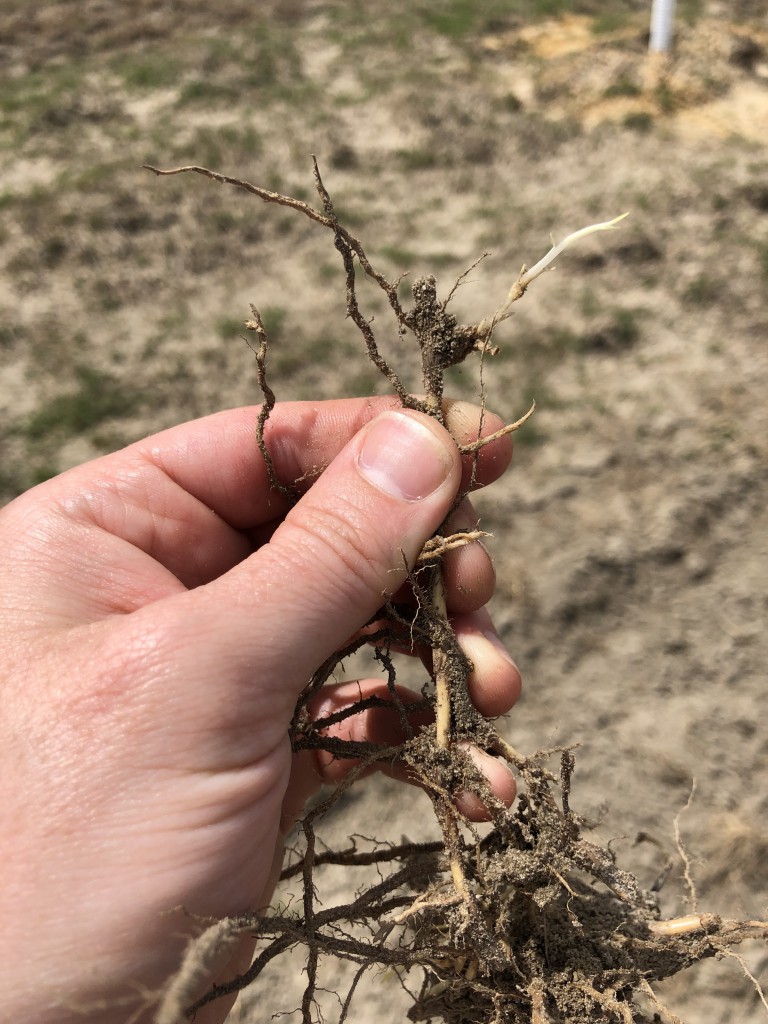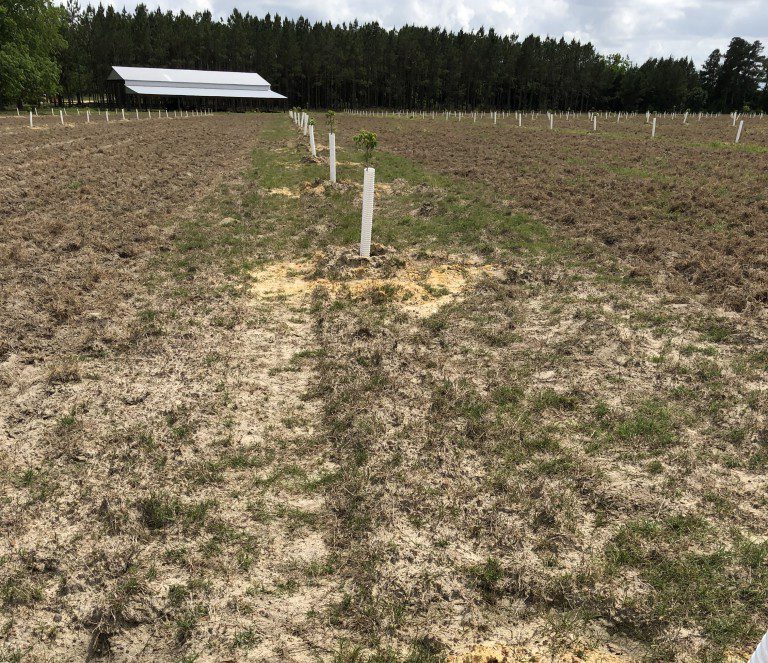Weed control is especially important during the tree’s first few years of growth. Orchards planted behind hay fields or in areas where bermudagrass is prominent may struggle with control. Bermudagrass is a very difficult perennial grass to control, and it’s aggressive growth can be in direct competition with young tree feeder roots getting established. Because bermudagrass spreads significantly by rhizomes, post-emergent herbicide applications are our only viable option. With bermudagrass, it’s going to take multiple applications. Keep in mind the most effective timing on perennial weeds like bermudagrass is toward the end of the season (September – October). During this time, bermudagrass is moving photosynthate to its roots to prepare for dormancy. This allows translocating herbicides to better move to the roots.
Herbicides
- Fusilade (fluazifop) can be used for both bearing and non-bearing trees. We have to use crop oil with Fusilade (1 qt/A). For pecan, we can use up to three times per year. Use no more than 24 oz at a time. DO NOT use when harvestable nuts are on the ground, or if livestock graze under the trees.
- Poast (sethoxydim) can also be used for both bearing and non-bearing trees. We needs crop oil also (1 qt/A). Use no more than 2.5 pint / A for each application. Don’t harvest within 15 days of application.
- Select (clethodim) can only be used in non-bearing trees. We need a non-ionic surfactant (1 qt/100 gal of spray).
- Glyphosate can be used on non-bearing and bearing trees. As long as herbicide guards are on trees and care is taken toward wind and drift, there is no problem with glyphosate on young trees.
Young Tree Program
A good bermudagrass control program will be multiple applications of these herbicides.
- After spring green up – Use a grass herbicide alone at a high rate (such as Select).
- Mid summer – Follow up with a strong rate of glyphosate.
- After August 15th – Use a grass herbicide mixed with a high rate of glyphosate. End of the year applications (late September/October) are the best on Bermuda as it is storing carbohydrates for the winter. This will do a good job to protect young trees.

Other points for bermudagrass control:
- How much water per acre should we use with glypohosate? Do not use more than 20 GPA with glyphosate. We recommend 10-20 – if you go higher you dilute the effects of glyphosate.
- Is surfactant needed with glyphosate? No surfactants are needed. Add an AMS (liquid or spray grade) if you have hard water to acidify.
- How high of a rate of glyphosate on young trees? There would be no issues using a high rate (2 quarts per acre) on young trees that have irrigation. Probably more risky without irrigation to go this high.

